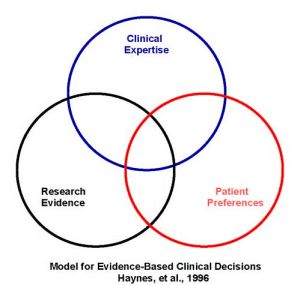|
Ankle Brachial Index
(ABI)
Clinical application: decisions about use of compression, and use
of sharp debridement. Prognostic for wound healing.
Ankle SBP / Brachial SBP
Must have a doppler US to hear SBP at the dorsalis pedis artery.
Cuff goes around calf).
For normal persons, leg SBP is higher than brachial SBP.
| 0.9
- 1.2 |
Normal |
| 0.7
- 0.9 |
Mild
arterial disease (intermittent claudication pain) |
| 0.5
- 0.7 |
Moderate
arterial disease (claudication pain at rest) |
| <
0.5 |
Severe
arterial disease (risk of gangrene) |
According to O’Sullivan, S.B. and Schmitz T.J. (Eds.). (2007). Physical rehabilitation: assessment and treatment (5th ed.). Philadelphia: F. A. Davis Company. p.660
| < 0.9 |
Peripheral Arterial Disease |
| 0.8 - 0.5 |
Claudication |
| < 0.5 |
Limb ischeima |
According to Watchie, J. (2010). Cardiovascular and Pulmonary Physical Therapy. (2nd ed.). Philadelphia: Saunders-Elsevier. p.253
Falsely high values that
are > 1.2 may indicate arteriosclerosis (diabetes), because
the vessels are calcified and non-compressible by the BP cuff. Referral
for other testing would be appropriate.
|
